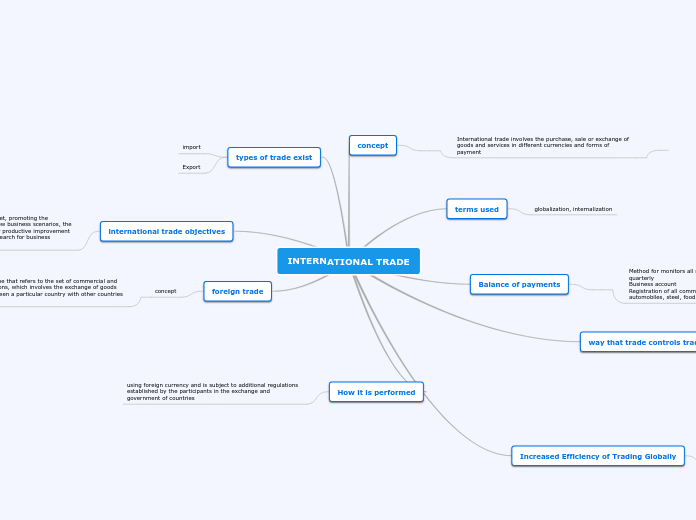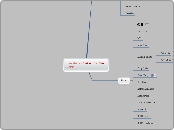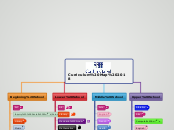Considerations for Faculty When Putting a Course Online
Faculty considering putting their course online have more considerations than just adjusting their curricula into an online or blended format. They must also consider the pedagogical change in their methodologies and approach to teaching. There must also be a love or enjoyment of using technology and all it has to offer the faculty member and the students, not to mention the fact that they know they are making their course much more accessible to students.
These are criteria that I feel faculty should use to consider if their coursework is suited to blended or online teaching. They are divided into two categories, one for the classroom/curricula, the other, for “personal”, to indicate if the “faculty member” is ready to put their course online.
Classroom/Curricula
Technological Skills
Does instructor have students currently access other educational resources for the class via remote/online means, and provide instructions for easily doing so?
The instructor is going to have to be somewhat versed in using various Internet media so that they can be available to assist their students in this realm to which they are involving them. If the instructor hasn’t experienced or review these online media sources, and hasn’t experienced them, how can they possibly expect their students to in any constructive manner that is conducive to learning in their course.
Course Enhancements
What media does the instructor currently use in the course that would translate well to the online environment and will continue to “engage” students in active learning?
If an instructor is already using some form of “web enhancement” in their course to engage students, this is giving them a huge “leg up” toward translation of their course to the online environment. Engaging students whether online or face to face is essential to their educational process and is the only way we will get them to absorb the methodologies we are imparting to them.
Instructor Availability
Is instructor readily open and available for contact outside of the classroom in face to face environment? If so, how much, and are they mentally prepared to increase this amount proportionally?
Being online and using more electronic and virtual means of communicating can translate to more unplanned interruptions in the instructor’s days/evenings, and requires the instructor to be versatile in dealing with student needs as they arise. The contact time transition in moving from face to face to online, means that students no longer anticipate contact within the confines of the class time and office hours, but instead, virtually any time during day and some evening hours, dependent upon when instructor office hours are set and when the instructor makes themselves available on e-mail, or via other telecommunications methods.
Instructor/Student Interaction
How much interaction does the current face to face course allow for between instructor and student? Can this be translated accordingly to the online environment?
Many face to face courses only allow for face to face interaction in the three or four hour block per week that the student is seen in class. One beauty for students is that they “virtually” have an open classroom Monday through Friday and limited availability of instructors on weekends. This is something each instructor needs to measure and set expectations for in the online classroom, never over promising and under delivering, but living up to interaction requirements/limits that they preset at the beginning of the course.
Instructor is Available
Does the instructor currently provide standards for their response and availability?
Students need to know when to expect responses from their instructors about questions they have and need answered. Knowing that when they post a question, it’ll be answered within a window of time, puts the student at ease knowing that an answer will be back to them so that they can continue their progression towards completion of the assignment.
Detailed Rubrics
Does the instructor currently provide detailed rubrics for assignments in the course?
Rubrics give the student an advanced score card about what to do to accomplish excellence in every individual assignment. The more rubrics an instructor provides, the less questions students will have after grades are posted for assignments.
Student Interaction
Does the course have activities that can be taken from the face to face version to online that continue to foster instructor-student, content-student, and student-student interaction?
This is something again that is going to require creative thinking from the professor as well as working with the school’s instructional technologist. Most activities can in some way be fashioned to the online environment that will foster these interactions.
The Blended Option
Can the “heavy” hands on learning activities be accomplished in weeks when students are in “face to face” mode, with reading and book assignments done with live synchronous online lectures and recordings in online weeks?
This is a perfect example of how to run a blended course, creating an environment of utmost convenience for students, assuming that professor and students have the technology and expertise to perform these processes.
"Hands-on Activities"
Does the course require a lot of one-on-one, hands on and physical training, i.e.-cleaning a patient’s teeth, taking a patient’s temperature/blood pressure, replacing brakes on a truck, building a cabinet with woodworking tools, etc.?
Let’s face it, there are many things an online course cannot replace in a face to face teaching environment. Such hands on technical processes as described above can be “demonstrated” in video online, however, “doing” online just cannot replace “doing” in person.
Class Discussions
Can classroom discussions be taken in a productive manner to the online environment where students can discuss in a forum either in large or small groups?
Most definitely. This will require some learning by the online professor on how to set up the discussions and topics, establishment of a quantifiable rubric for grading the discussions, and a methodology for “facilitating” but not “micro-managing” the discussions. This will require some guidance from instructional technologists to get started, but once initiated into the process, the professor will find it a very useful method for learning and sharing of knowledge.
Workable Presentation Tools
Can materials used in the face to face environment be translated to the online environment in a suitable manner without losing their meaning and continue to address objectives/outcomes?
Yes, they will just need adaptation to hold their meaning and purpose in the online environment with a variety of technologies we have available to use such as Soft Chalk, LodeStar, and various methods within the LMS.
Easily Submitted Assessments
Can assignments in the course be translated from a requirement of the student handing in personally, to being handed in via an upload method?
Yes, if a professor was strict about late work in the face to face course, there is no reason that this cannot translate well to the online environment. Now however, the excuse won’t be, “the dog ate my homework”, but instead will be, “my Internet connection went down”, my computer shut down and I had no way to upload my homework on time, etc. I have found that converting my “face to face” students to a dropbox environment “before” converting my courses to a blended or online environment helped me get used to this before going fully online.
Clear Expectations
Does faculty member provide a clear set of expectations for their students in the face to face course that will translate well to students in their online offering?
Expectations in the face to face environment may not necessarily align perfectly with the online environment unless they are typically the intangible, check into the site regularly, turn homework in on time, participate in groups, etc. There will be specific expectations that the professor will need to set that are unique to the online environment such as posted rubrics for small group discussions, meeting online with classmates at specified times, availability of the instructor for online office hours, response time for answers to questions, etc.
Well-planned Schedule
Does the faculty member have a well planned calendar/schedule for the semester for students to follow?
This is essential or two things will occur:
1) the students will bombard the professor with emails constantly asking which assignment/discussion/quiz/exam is due when, and
2) the students will lose interest in the disorganized course quickly and the professor will have very few students left in the course. Retention rates will drop quickly and the professor will have failed without ever having gotten his/her materials across to students. Also, and as importantly, students will have lost valuable time in their progression towards their award.
Appropriate Assessments
Can assessments be translated well into an online environment/process by some means/method?
“Sometimes” assessments from a “face to face” course “can” be translated in some way shape, or form to an online assessment. However, it’s likely not the norm. The good news is that there are technologies available either within the LMS or through the school’s Online Learning Coordinators that will assist professors in adapting the focus of assignments to the online environment. It definitely takes thinking “outside the box” and creativity. An online professor MUST put themselves in the students’ shoes and have or develop empathy for what the online student is facing in their course.
Well-developed Criteria
Do you have well developed criteria for success?
One of the first things students are thinking in a course is,” What can I do to get an “A” in this course? A good online professor sets up good rubrics, direction, and criterion for success for each assignment in their course so students will easily know what it takes to succeed in each assignment.
Well-defined Assessments
Are assessments in the course well defined?
Well defined assessments are the key to any successful course, online or not. Maybe even more so in online as you aren’t there on a weekly or daily basis to “hand hold” your students when they begin an assignment at 1 a.m. on a Saturday morning, or 10 p.m. on a Tuesday night.
Course Objectives
Are the objectives of the course well stated and easy to understand?
In order for students to gain a better understanding of your course, online or not, giving them the course outcomes and objectives will help them to better know what is going to be expected of them and the knowledge they will gain by participating in this course.
Personal
Empathy with Students
Can the faculty member place themselves in the role of a student taking the course and have empathy with students accessing the course materials and following course instruction?
Many online experts state that it’s important for a faculty member desiring to teach online, to have taken an online course. This doesn’t hold true in all cases, but does tend to give the prospective online faculty member a taste for what “to do” and what “not to do” to enhance learning and instruction in their online course. The ability to place one’s self in another’s shoes will always be imperative whether a course is taught online or face to face. It will also be an important criteria when creating materials and processes for your online course.
Accommodating Student Needs
Does faculty member value online learning as an accommodation to and for their student’s access to education?
Access to education for students has never become more important than it is today in our busy and competitive world. Students may live or work a long distance from campus, have children or parents for whom they are the caretakers, or a variety of reasons for which they need and desire quality online education. It’s important for the faculty member to realize that students are taking their online courses for these reasons and to make the experience as or even more enriching as their face to face courses.
Recognize Value of Online Learning
Does the faculty member value online learning as being equivalent to face to face learning?
Before anyone does anything, they must believe in it, or there is a high percentage of likelihood that they will fail. Failure of the faculty member in this case means many students failing to receive the education they and the taxpayers allocated for their education. If a faculty member can’t honestly say that they value online learning as equivalent to the face to face classroom, then they shouldn’t be teaching in an online setting.
Encourage Academic Honesty
Can faculty member set up systems to dissuade students from cheating, or systems that won’t matter if they use additional materials on exams, etc.?
Such tools/technology as the Respondus Lock Down Browser™, creative methods to give exams (randomizing questions), and fair but limited time allocations on quizzes and exams are but three ways to provide evaluations for students to limit cheating and unethical means to accomplish their tasks. We find that use of such methods create an environment whereby a student has no more methods to cheat than if they were in a supervised classroom environment.
Use of Technology
Is the faculty member capable of and open to using audio/video technology to perform live synchronous lectures and record lectures as well to make them available to students?
Hearing their own voice and seeing themselves on camera can be a frightening experience for some people. Simulating this in class experience by using audio/video technology to impart important facts, figures, and processes to our students can again, make this experience more fascinating and enjoyable for our students, not to mention helping them feel that they aren’t “out there” alone and isolated from instruction.
Open to Learning
Is the faculty member capable and open to learning new forms of technology to get them closer to their students in an online format?
There are new programs being created constantly that allow us to almost simulate being right there in the classroom with our students, and “in front of them” as we teach them our subject matter. This is going to require taking the time to learn new programs to compliment these tasks and skills. Being open to new forms and methods of presenting course work to students through online methods can only enhance your teaching experience, and student learning.
Time Committment
Is the faculty member open to using technology daily and even on evenings and weekends?
Those of us that have taught online find it somewhat addicting, not only to us, but to our students. Since this is a 24/7 environment, we find that students are working several hours on the weekends accomplishing tasks that we are assigning. It is very useful for the faculty member to “check in” with their email and classes on the weekend to ensure all is well with the student progress and to answer urgent questions students may have. It doesn’t mean that one must “always” work on the weekends; however, realizing that you’re tending to “watch over your flock” tends to make one “want” to check in.
Tour
Is the faculty member prepared to “show students” around the course within the confines of D2L either in written or in a verbal (audio/video) orientation process?
Creating actions and putting them into the written word or a well done audio clip in an online or blended course is one of the skills that will pay dividends to the faculty member. Writing and verbal descriptive skills will never be more important than when you’re trying to “welcome” and “guide” your students in Course News postings.
Welcome
Is the faculty member prepared to translate a standard first day welcome to the class into an introductory opening statement in the LMS Course News?
We all like to be “welcomed” into a new event in which we are participating. Students are no different. We need to make them comfortable when they enter our face to face class, and the online experience is no different, and in fact, maybe even more sensitive to this welcoming attitude. It’s our job to make students feel comfortable when they enter our online class for the first time and every time they enter. For some, this will be their first experience with online learning, so its highly important to make a great impression.









